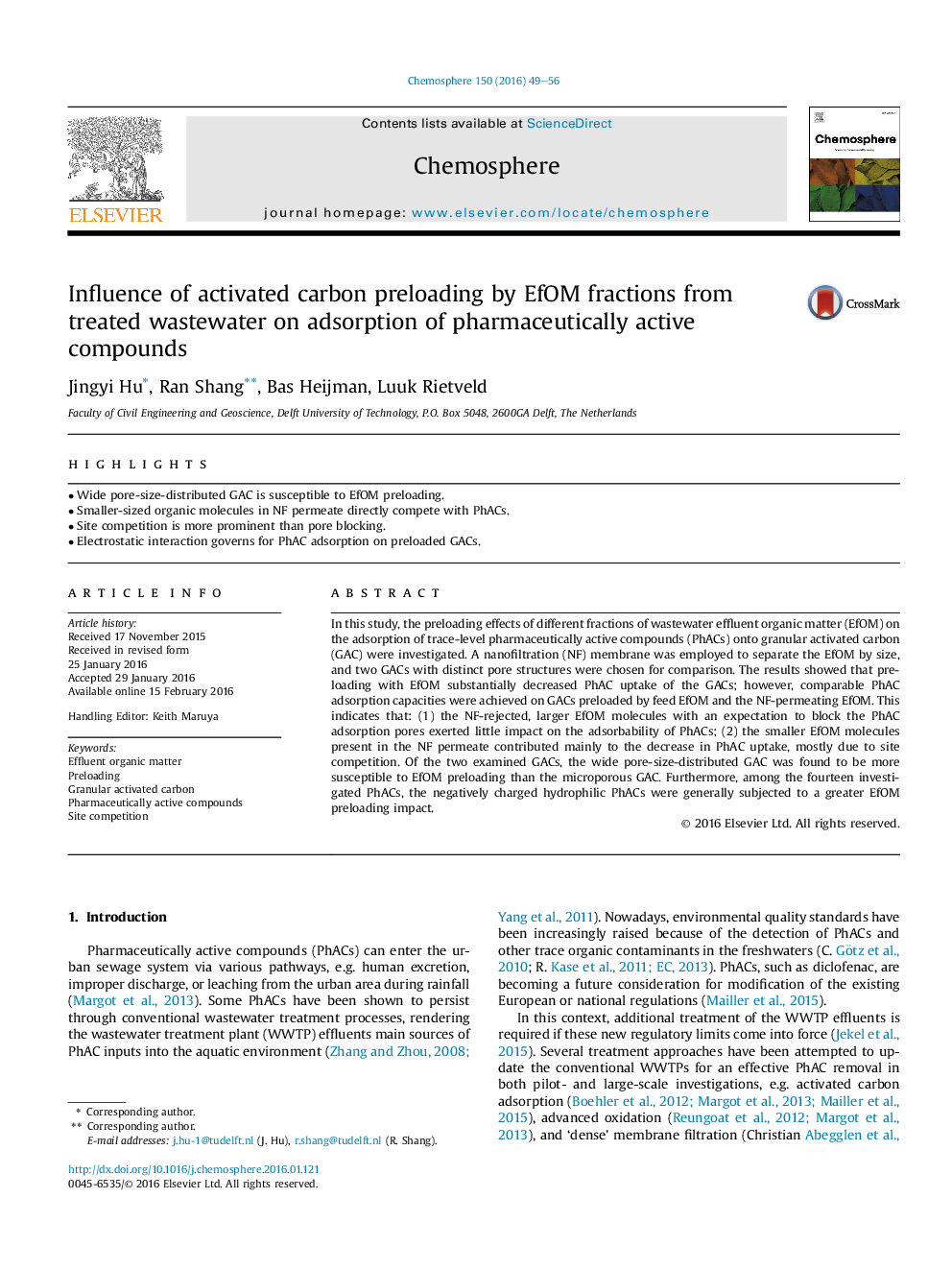| Article ID | Journal | Published Year | Pages | File Type |
|---|---|---|---|---|
| 6306754 | Chemosphere | 2016 | 8 Pages |
â¢Wide pore-size-distributed GAC is susceptible to EfOM preloading.â¢Smaller-sized organic molecules in NF permeate directly compete with PhACs.â¢Site competition is more prominent than pore blocking.â¢Electrostatic interaction governs for PhAC adsorption on preloaded GACs.
In this study, the preloading effects of different fractions of wastewater effluent organic matter (EfOM) on the adsorption of trace-level pharmaceutically active compounds (PhACs) onto granular activated carbon (GAC) were investigated. A nanofiltration (NF) membrane was employed to separate the EfOM by size, and two GACs with distinct pore structures were chosen for comparison. The results showed that preloading with EfOM substantially decreased PhAC uptake of the GACs; however, comparable PhAC adsorption capacities were achieved on GACs preloaded by feed EfOM and the NF-permeating EfOM. This indicates that: (1) the NF-rejected, larger EfOM molecules with an expectation to block the PhAC adsorption pores exerted little impact on the adsorbability of PhACs; (2) the smaller EfOM molecules present in the NF permeate contributed mainly to the decrease in PhAC uptake, mostly due to site competition. Of the two examined GACs, the wide pore-size-distributed GAC was found to be more susceptible to EfOM preloading than the microporous GAC. Furthermore, among the fourteen investigated PhACs, the negatively charged hydrophilic PhACs were generally subjected to a greater EfOM preloading impact.
